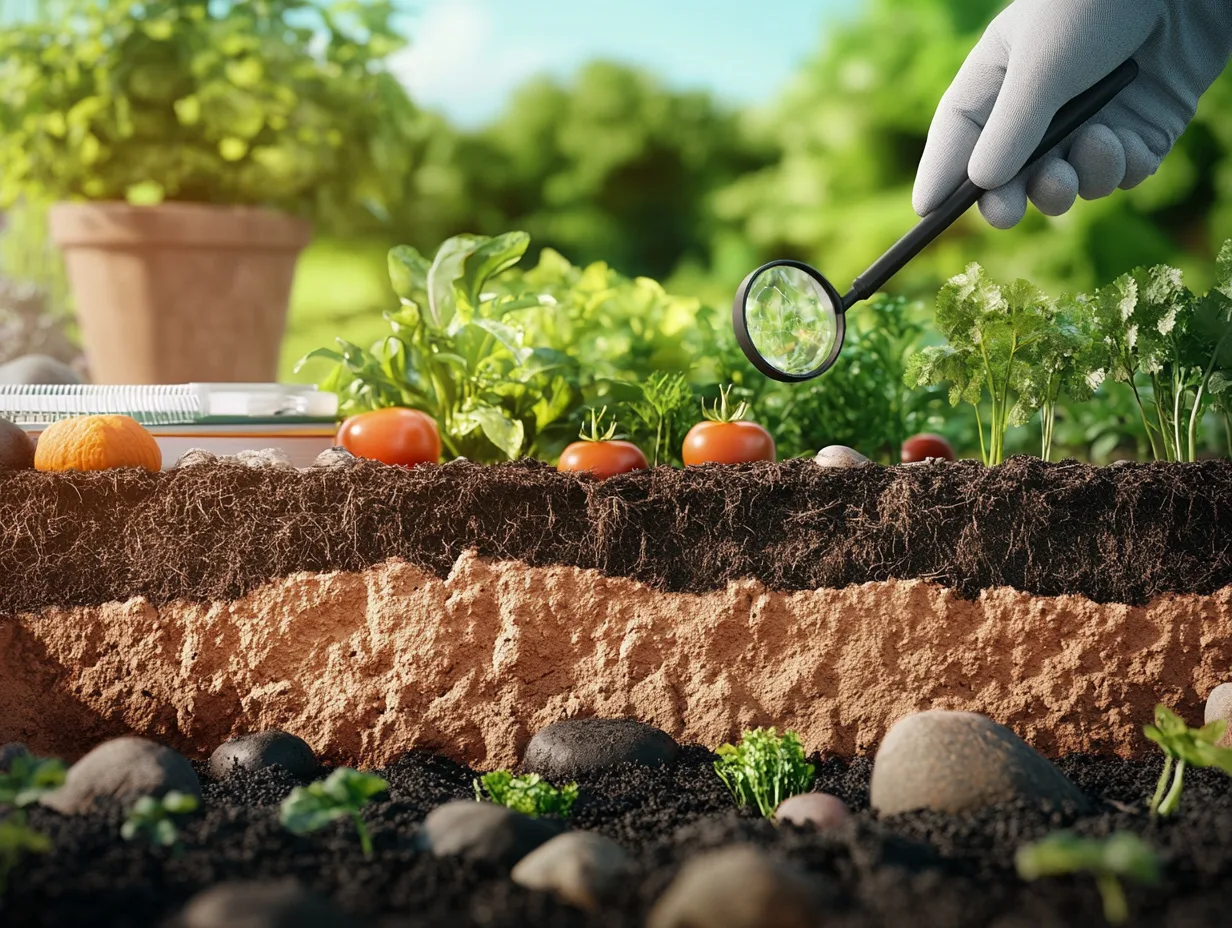Understanding and Improving Soil Composition for Better Yields
Imagine stepping into your garden and immediately noticing robust, healthy plants and abundant harvests season after season. Achieving this dream often comes down to a crucial factor that many growers overlook: the very ground beneath their feet. The Science of Soil reveals that understanding and improving soil composition can transform the way you garden, leading to better yields, stronger plants, and a more sustainable growing environment. By gaining insight into soil structure, nutrients, microorganisms, and management techniques, you’ll be well on your way to cultivating thriving crops and maximizing your garden’s full potential.
Unraveling the Complexity of Soil Composition
It’s easy to think of soil as simple dirt, but this valuable resource is far more complex than meets the eye. Learning the fundamentals of soil composition is your first step toward unlocking richer harvests.
The Basic Components of Garden Soil
Soil is composed of a combination of mineral particles, organic matter, air, and water. This delicate balance affects everything from nutrient availability to root penetration. The primary mineral particles—sand, silt, and clay—determine soil texture and influence factors like drainage and aeration. Meanwhile, organic matter from decomposed plants and organisms adds essential nutrients and improves soil structure.
Key Points to Remember:
- Sand provides drainage but may lack nutrient retention.
- Silt offers balanced texture and moderate nutrient-holding capacity.
- Clay holds nutrients and moisture well but can become compacted.
- Organic matter improves soil fertility, structure, and water retention.
For a deeper dive into composting and organic matter, consider reading our post on Composting 101: Transforming Kitchen Waste into Garden Gold.
Soil Texture and Structure: Key Determinants of Plant Growth
Texture refers to the proportions of sand, silt, and clay particles in your soil. The best soils often feature a loamy texture—a balanced mix that provides good drainage, moderate moisture retention, and ample nutrient availability. Soil structure, on the other hand, describes how these particles cluster into aggregates. Stable aggregates allow roots to penetrate easily, improve airflow, and support beneficial soil microorganisms.
Improving Soil Texture and Structure:
- Add organic matter through compost and leaf mold.
- Avoid over-tilling, as it can break down beneficial aggregates.
- Incorporate cover crops to enhance soil stability and fertility.
Nutrient Management: Ensuring Balanced Soil Chemistry
Beyond physical composition, soil chemistry plays a significant role in plant health. Proper nutrient management ensures your crops have the essential elements they need for vigorous growth.
Essential Macronutrients and Micronutrients
Plants require a range of nutrients, with nitrogen (N), phosphorus (P), and potassium (K) being the primary macronutrients. However, micronutrients like iron, zinc, and manganese are equally vital, even if required in smaller quantities. Striking a balance between these elements can be challenging but is key to preventing deficiencies, promoting lush foliage, and encouraging fruit and flower production.
Balancing Nutrients Naturally:
- Rotate crops that have different nutrient requirements to prevent depletion.
- Incorporate legumes (e.g., peas and beans) that fix atmospheric nitrogen into the soil.
- Use well-rotted compost or homemade fertilizers to maintain nutrient availability.
To learn more about nourishing your plants naturally, explore our post on DIY Homemade Fertilizer: Turning Kitchen Scraps into Nutrient-Rich Soil.
Maintaining Soil pH for Optimal Nutrient Uptake
Soil pH influences nutrient availability. Most vegetables and flowers thrive in a slightly acidic to neutral pH range of about 6.0 to 7.0. When the pH drifts too far outside this zone, certain nutrients become less accessible, even if they’re present in the soil.
Tips for Adjusting Soil pH:
- Add garden lime to raise acidity if your soil is too acidic.
- Incorporate elemental sulfur to lower pH and counteract alkaline conditions.
- Test your soil regularly to keep track of pH levels and make timely adjustments.
Biological Life Beneath Our Feet: Soil Microbes and Worms
While the chemical and physical aspects of soil are crucial, it’s the biological life that truly makes it thrive. Soil organisms, from bacteria and fungi to earthworms, play a pivotal role in nutrient cycling, decomposition, and soil structure.
Beneficial Soil Microorganisms: Fungi, Bacteria, and Actinomycetes
Healthy soil teems with microbes that break down organic matter, release nutrients, and form beneficial relationships with plant roots. Mycorrhizal fungi, for example, help roots access nutrients and moisture more efficiently, while certain bacteria convert atmospheric nitrogen into a plant-available form.
Encouraging Beneficial Microbes:
- Minimize chemical inputs that can harm beneficial organisms.
- Regularly incorporate compost and organic matter.
- Maintain proper soil moisture levels to support microbial activity.
Earthworms and Other Soil-Dwelling Allies
Earthworms improve soil aeration and drainage by tunneling through the earth, creating channels for roots and water. Their castings—rich in nutrients—help maintain soil fertility. Similarly, arthropods and other invertebrates break down organic matter and contribute to the formation of stable aggregates.
Techniques to Improve Soil Quality for Higher Yields
Armed with an understanding of soil composition, chemistry, and biology, you can now apply practical techniques to improve the quality of your garden soil.
Incorporating Organic Matter and Compost
Adding organic matter is one of the most effective ways to improve soil fertility and structure. Compost, leaf mold, and well-rotted manure boost nutrient content, support microbial life, and enhance moisture retention. They also help break up heavy clay soils and add stability to sandy soils.
Simple Steps to Add Organic Matter:
- Spread a layer of compost over your garden beds each spring.
- Use green manures and cover crops to add organic material between growing seasons.
- Mix in shredded leaves or straw to improve soil aeration.
For an in-depth look at composting, check our article on Composting 101: Transforming Kitchen Waste into Garden Gold.
Cover Crops and Crop Rotation
Cover crops like clover and winter rye protect bare soil, reduce erosion, and add valuable organic matter. Meanwhile, practicing crop rotation—systematically changing which crops grow where—helps maintain nutrient balance and reduces the risk of pests and diseases.
Cover Crop Benefits:
- Suppress weeds naturally.
- Improve soil structure and fertility.
- Add nitrogen and other nutrients when incorporated into the soil.
For more on crop rotation and its benefits, visit our post on The Essential Guide to Crop Rotation: Boosting Soil Health and Yield.
Mulching, Aeration, and Reduced Tillage
A layer of mulch—such as straw, wood chips, or shredded leaves—helps conserve moisture, moderate soil temperature, and suppress weeds. Proper aeration, achieved by gently loosening soil or using tools like a broadfork, allows roots and microbes to access essential air and water. Reducing tillage prevents the breakdown of soil structure and protects microbial habitats.
Soil-Friendly Practices:
- Apply organic mulch around plants to retain moisture and reduce competition.
- Avoid excessive tilling to maintain soil aggregates and prevent compaction.
- Use hand tools for gentle aeration, preserving beneficial microorganisms.
Using Homemade Fertilizers and Soil Amendments
By creating your own fertilizers from kitchen scraps, compost, or naturally sourced ingredients, you provide your soil with a steady supply of nutrients. Organic amendments like bone meal, kelp meal, or rock phosphate can help correct specific deficiencies without relying on synthetic chemicals.
Selecting the Right Amendments:
- Test your soil to identify nutrient shortages.
- Choose organic amendments that address specific deficiencies.
- Apply them according to recommended guidelines to avoid nutrient imbalances.
Assessing and Monitoring Your Soil’s Health
Understanding current soil conditions ensures that your efforts to improve composition and fertility remain on track.
DIY Soil Testing Methods
At-home soil test kits, readily available at garden centers, provide a snapshot of pH and nutrient levels. While not as detailed as professional analyses, these kits help you make informed decisions about amendments and crop choices.
DIY Testing Tips:
- Follow the instructions on your test kit carefully.
- Test multiple areas of your garden for accurate results.
- Re-test periodically, especially after significant soil amendments.
Professional Soil Analyses and Resources
For deeper insights, consider contacting your local agricultural extension service or a certified laboratory. These professionals provide detailed reports on nutrient content, organic matter levels, and pH. Additionally, organizations like the U.S. Department of Agriculture (USDA) and university extensions (e.g., Penn State Extension) offer research-based guidance to help you refine your soil management practices.
Putting It All Together: A Holistic Approach to Soil Management
Truly embracing The Science of Soil means adopting a holistic, long-term approach to garden care. By simultaneously addressing soil structure, nutrient balance, microbial life, and responsible management practices, you create an environment where plants can thrive year after year.
Sustainable Practices for Long-Term Soil Fertility
Implementing a combination of techniques ensures that your garden becomes more resilient over time. For instance, pairing compost additions with cover crops and careful tillage reduction creates a synergy that enhances soil health. Monitoring your soil’s condition and adjusting your strategy as needed helps maintain continuous improvement and consistent yields.
Your Roadmap to Soil Success:
- Understand the basics of soil composition and texture.
- Maintain a balanced nutrient profile through rotation, amendments, and organic matter.
- Support soil organisms by providing stable habitats and minimizing chemical inputs.
- Regularly assess and adjust your soil management strategy based on feedback and results.
By investing time and effort into understanding and improving your soil composition, you can expect stronger plants, more abundant harvests, and the satisfaction of nurturing a thriving garden ecosystem. Embrace the science behind soil health, and watch as your yields climb to new heights.


Leave a Reply